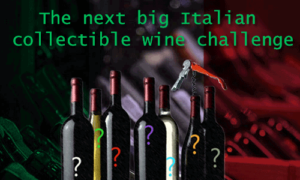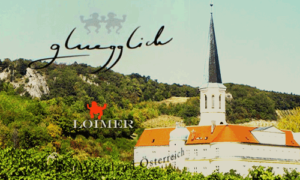The genius of Prosecco – why Prosecco is not running out of bubbles any time soon
Bubbly genius
The genius of Prosecco lies in its enormous popularity. Prosecco’s message oozes lifestyle and goes above and beyond the appeal of just any sparkling wine.

Why talk about the genius of Prosecco? The enormous popularity of Prosecco shows that its message goes above and beyond the appeal of just any sparkling wine. Prosecco is in demand, and everyone seems to like it. People are always finding the best alibi to open a bottle. First and foremost, it is a festive thirst quencher. It has bubbles, is it is light, aromatic, predominantly fruity, and to be honest, quite tasty. Plus, extremely popular and affordable. How did Prosecco manage to tap into the consumer culture of the world at large and create consumer loyalty so successfully?

Prosecco is one of the wine world’s most successful products
Prosecco epitomizes the genius of the wine world. It evolved into a lifestyle brand that exists for reasons beyond selling sparkling wine. It offers consumers the possibility to be part of a successful way of living, in each country attracting a different community that leads by example. In Italy, Prosecco is mainly consumed in bars, as an aperitif or mixed in an Aperol Spritz. In France, it is the chosen drink for family dinners. In the UK it is a party drink or consumed with friends in a wine bar. Millennials like to use it as a basis for cocktails.
It is light, simple to drink and easy to mix. It became the convivial glass to break the ice on social occasions. Prosecco’s success shows in sales numbers too. In 2014 Prosecco for the first time surpassed Champagne in terms of bottles sold worldwide, though not in turnover by a long stretch.
Prosecco as we know it today
Prosecco became such an enormous commercial success in volume and brand name that producers in other parts of the world jumped on the Prosecco bandwagon. Why? Because Prosecco cleverly managed to fill a gap in the sparkling wine market. Champagne was too expensive, too luxurious for just a festive treat. Cava was not. But, Cava suffered from a negative brand image. Prosecco, on the other hand, relayed a positive lifestyle. To drink Prosecco was “cool and fashionable”. It connected the consumer with a luxurious, yet affordable way of living, and made it desirable. Prosecco just oozed “luxury and coolness”, only at a cheaper price point than Champagne.

Regulation became a real necessity
Regrettably, Prosecco gained another reputation too, as the poor man’s Champagne. Besides, back in 2000, when the prosecco boom began, there were estimates that up to 20% of bottles on the market were fake. To separate the wheat from the chaff, the artisanal from the industrial, high volume Prosecco, a better regulation became a real necessity. From 2009 on, the establishment of Prosecco DOC and DOCG and all related production regulations protect the value of the Prosecco brand and confirm the bottle’s status. The Controlled Designation of Origin also implied the separation of the wine and the grape. Until 2009 the name Prosecco was used for both the grape variety as the wine.
The grape Glera, formerly Prosecco
Since the establishment of Prosecco DOC and DOCG the name Prosecco signifies the sparkling wine and the ancient name Glera identifies the grape variety. By rule, Prosecco must contain at least 85% Glera and the rest can be white grape varieties such as Verdisio, Bianchetta, Glera Lunga, Trevigiana, Perera, or less common Chardonnay, Pinot Grigio or Pinot Bianco. Since 2011 Prosecco DOC and DOCG bottles are easily identifiable because of a marked state band with a unique alphanumeric code located on the side of the bottleneck.

A short history of Glera
The first written evidence of the cultivation of the vine Glera appears in 1754 in Il Roccolo Ditirambo by Aureliano Acanti, who wrote something along the lines of “And now I would like to moisten my mouth with Prosecco, with his apple bouquet”. At present we still find the aromas of white flowers, apple, pear and peach in Prosecco.
Glera is a generous vine
Glera is an early budding, a semi-aromatic variety that is particularly sensitive to spring frosts. It does well in the North-Eastern part of Italy, thanks to the Venetian Pre-Alps protecting the Glera from cold northern winds and the mitigating effect of the nearby Adriatic Sea. Glera is characterized by large bunches and medium to high yields. Even with high yields, Glera retains medium to high sugar levels. As a consequence, differences in the taste of Prosecco wines are less linked to sugar levels, but more to maintaining the medium to high acidity levels. Acidity and the presence of aromatics are the components that give Prosecco its freshness, elegance and lightness.

The key difference between Prosecco and Champagne is not only the region
Champagne is made in the French Champagne region in north-eastern France using the traditional method also called méthode Champenoise. After the alcoholic fermentation, the base wine is bottled with added sugar and yeast. During the ageing process, sur lattes, the wine sits on its dying yeast and forms sediment called the lees, which are collected in the neck of the bottle. The bottle is then flash-frozen, the lees are popped out, a process named disgorgement, and the bottle is sealed again. Champagne is mainly made from the three grape varieties Chardonnay, Pinot Noir and Pinot Meunier.
The case of Col Fondo Prosecco then called Frizzante, next Sui Lieviti, then Spumante Sui Lieviti
Prosecco DOC is at home in the region Friuli and Veneto in north-eastern Italy, excluding the provinces of Rovigo and Verona. In the past Prosecco was made using a method locally called ‘col fondo’, literally with the sediment or lees present on the bottom, similar to the Ancestral method. Winter approaching, the winegrowers left the neutral wines from the Glera grape longer in contact with the skins and lees. To soften the (harsh) skin tannins, they added some sugar. When temperatures started to rise again in spring, fermentation restarted. The Italians say the wine is “frizzante a rifermentazione in bottiglia”, refermented in the bottle. Unlike Champagne, there is no disgorgement. It represents the original Prosecco, a slightly sweet, cloudy, earthy, textured, moderately sparkling wine. Several winemakers are making the original Col Fondo once more but were urged to use the term ‘Sui Lieviti’ -on the yeast or lees- instead. The bottle pressure of col fondo Prosecco is about 2.5 Bar, the new ‘Spumante Sui Lieviti’ rules allow up to 3 Bar. For these so-called Colfondisti, Col Fondo prosecco at 2.5 Bar expresses the terroir best and is the true wine of the region.

The Martinotti, Charmat or Tank method
Now the vast majority of Prosecco is made with the Charmat method. Although, it was Frederico Martinotti who secured the patent for the second fermentation in tanks in 1895. Martinotti’s method was improved by the Frenchman Eugène Charmat in 1910. After the alcoholic fermentation, the wine is placed in a large temperature-controlled autoclave, selected yeasts are added to a pressurized tank of still wine, and the wine is left to ferment for 30 days. After which the wine is bottled under pressure. To be called Prosecco Spumante the pressure will have to be 3 bars or higher. Generally, it is more around 3.5 Bar or 3.5 times atmospheric pressure in a bottle. The Charmat process is cheaper and faster than the méthode Champenoise.

What holds the future for the king of Italian fizz?
Has prosecco reached its saturation point? One could say yes. Although this festive, low alcohol, quite sweet (15 grams per litre of residual sugar is common) fizzy still holds its own in a changing market. After all, with its 24,450 hectares under vine, sales of circa 500 million bottles a year and turnover of a couple of billion, the Prosecco brand is doing incredibly well. Disappointing is the fact that, unfortunately, one finds plenty of mediocre Prosecco on the market.
Quality over quantity?
What will be the future of these mediocre quality Proseccos sold at low prices in supermarkets? Proseccos that lack structure, have feeble aromas and a short, muted finish. Is premiumisation the answer? Will quality reign over quantity or quantity over quality? In 2016, the Consorzio allowed a 3000 hectares augmentation of the area under vines – from 20,000 to 23,000 hectares – to meet the growing demand for wines made under the banner of the Prosecco DOC.

Is premiumisation the answer?
For now, the three Consorzios, 1 DOC, and 2 DOCGs decided not to expand the vineyard area further. Instead, they are aiming to restrict supply and move on to more sustainable vineyard practices. And raise the quality. Or at least show that the consumer that there are different levels of quality. The quality pyramid starts with the Prosecco DOC covering 9 provinces in Veneto and Friuli-Venezia Giulia and ends with Valdobbiadene Superiore di Cartizze DOCG. In the higher tiers, the Proseccos showcase quality, refinement and terroir expression, better bubbles and often diminished sugar levels.
At long last, a brand new category Pink Prosecco or Spumante Rosé Millesimato
The premiumisation of Prosecco also includes the introduction of a new category: Pink or Prosecco Spumante Rosé Millesimato. The official launch of the new category Prosecco Spumante Rosé Millesimato took place on the 25th of November 2020 in Treviso, Italy after getting governmental approval back in May.

Still a majority of white Glera grapes
Prosecco can only be called Prosecco Spumante Rosé if it applies the rules of the new Rosé Prosecco DOC. The rosé blend will still contain a majority of white Glera grapes, yet must include 10-15% Pinot Noir as well. Pinot Noir is the only red grape allowed in Prosecco. In the past, it was used to make a white, blanc de noir wine.
From 2020 on, it is allowed to use Pinot Noir to add colour to Spumante Rosé. Pinot adds delicate aromas of strawberry and raspberry to the wine too. Just wondering why they did not allow another indigenous red variety, such as Raboso, to do the same. Ageing has to last at least 60 days, bottle pressure must be 3 Bar or more, and the Spumante Rosé will be vintage-dated. The Rosé Prosecco DOC expects to sell 16 million bottles in the first year. Let’s see if Spumante Rosé’s fancy Website Pink Prosecco helps to jazz us up. When the quality is good, we could start loving Pink Prosecco as well.


